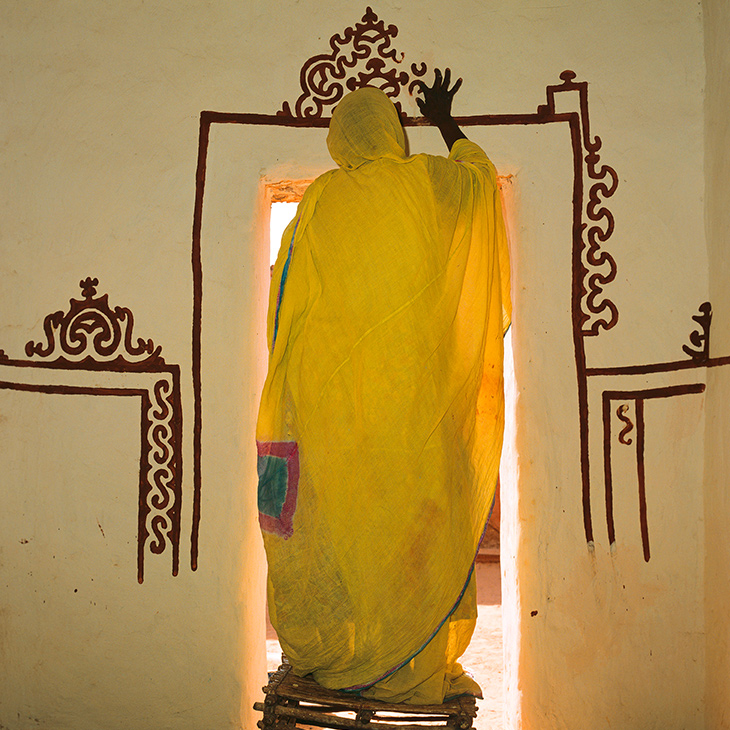
Nany mint Sass uses a combination of motifs representing parts of the body to create a decorative element around a doorway. Oualata, Mauritania, 1988
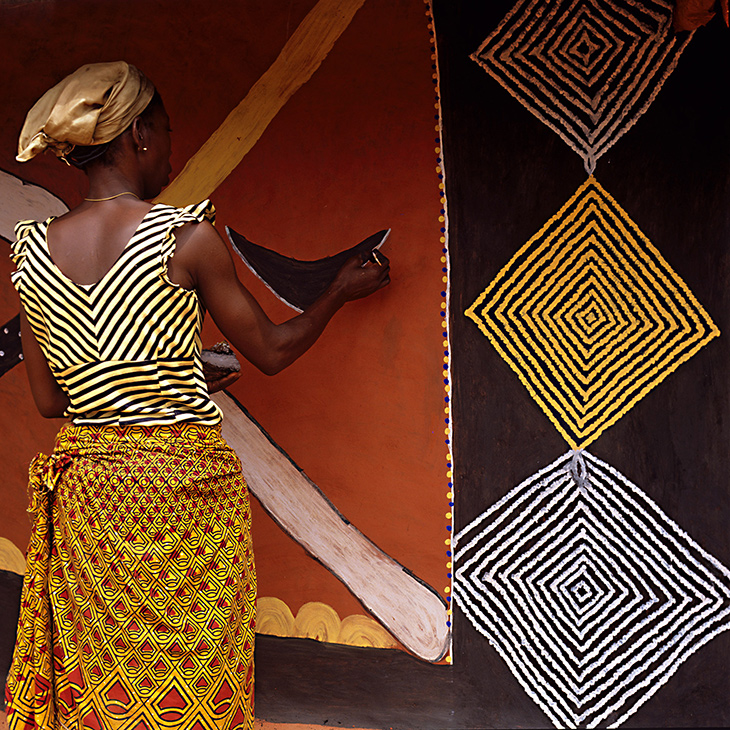
Nwunna was attracted to the western blouse she wears because of its resemblance to the traditional diamond-shaped motif used in scarification, ogalu. Nri, Nigeria, 1988
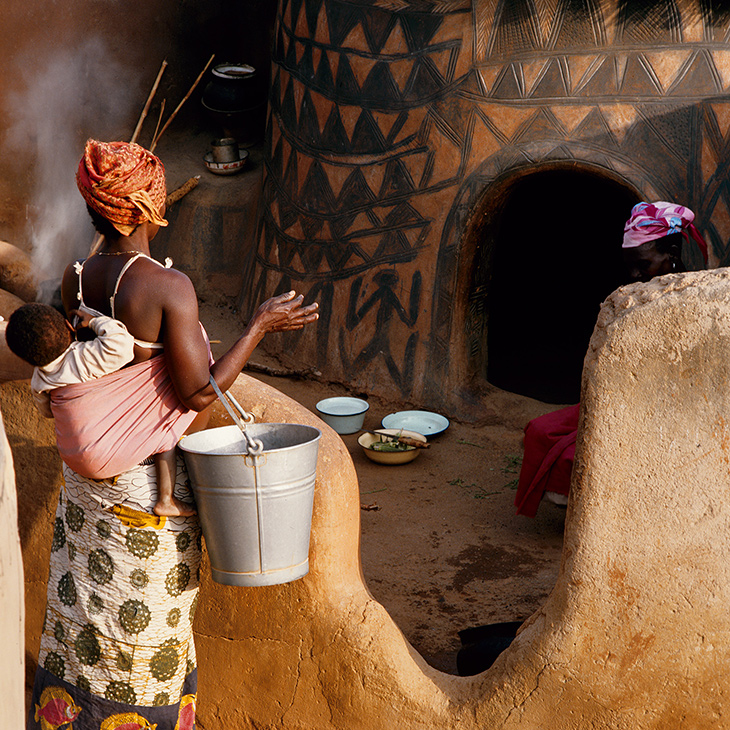
It is customary for the wives in a settlement to share their views on the decoration and beauty of one another’s compounds. The royal settlement, Tiébélé, Burkina Faso, 1987
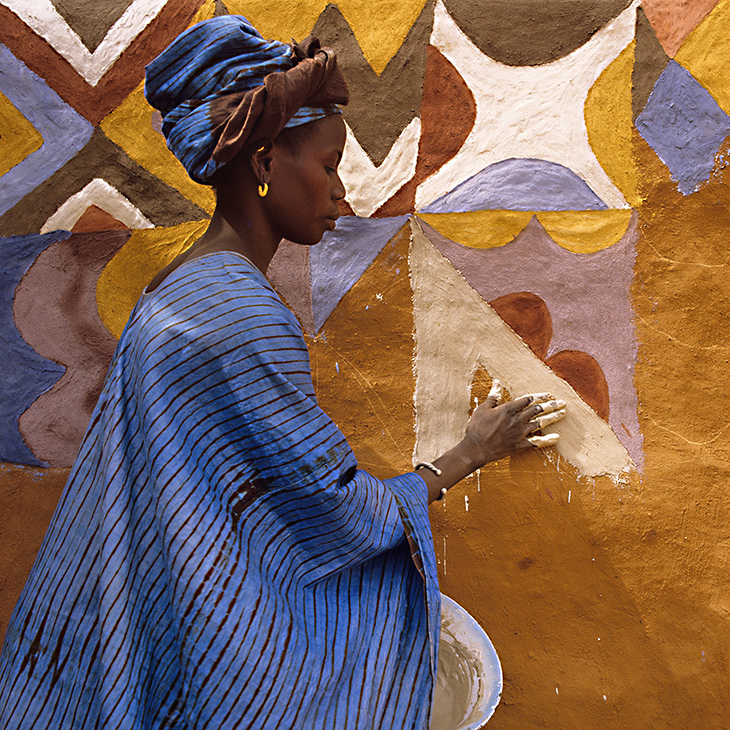
Silla Camara applies a paste of ground white limestone and water to the mud wall of her house. Djajibinni, Mauritania, 1988
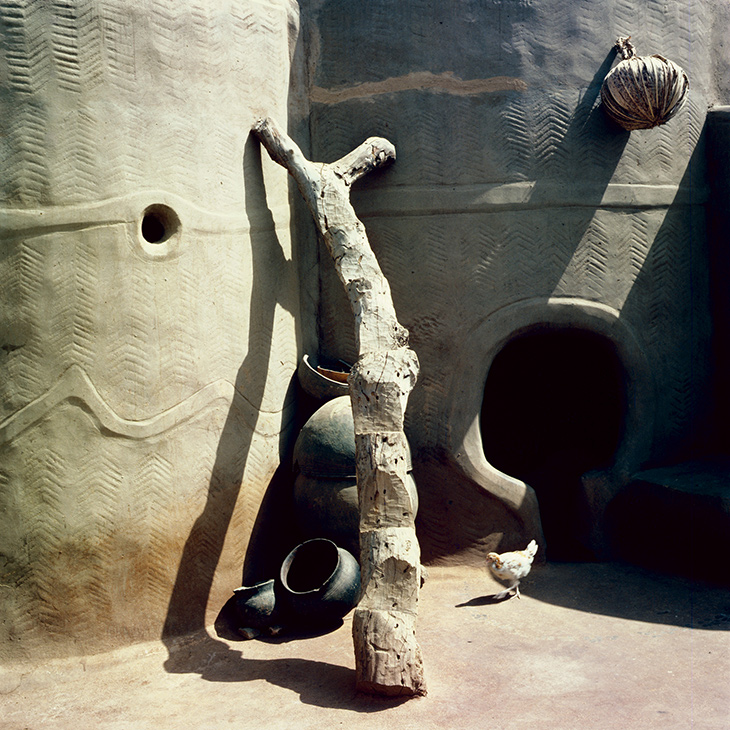
Entrance to a Bulsa dwelling with its textured wall surface created by using millet cobs pressed into the wet mud. Home of the Abobyeri family, Chuchiliga-Tadem, Ghana, 1986
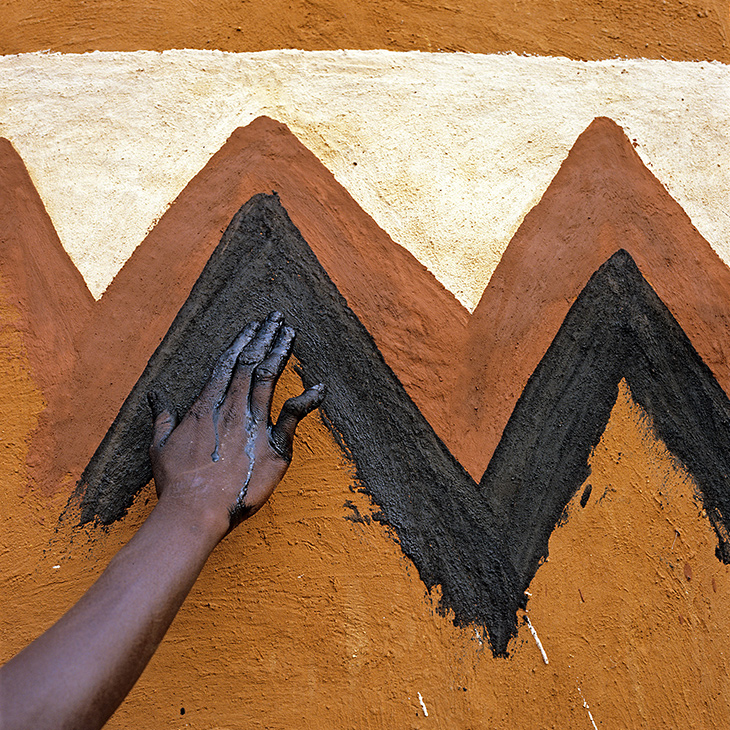
Soninke women use only their hands and fingers to apply the earth pigments obtained from the Senegal River. Buanch, Mauritania, 1988
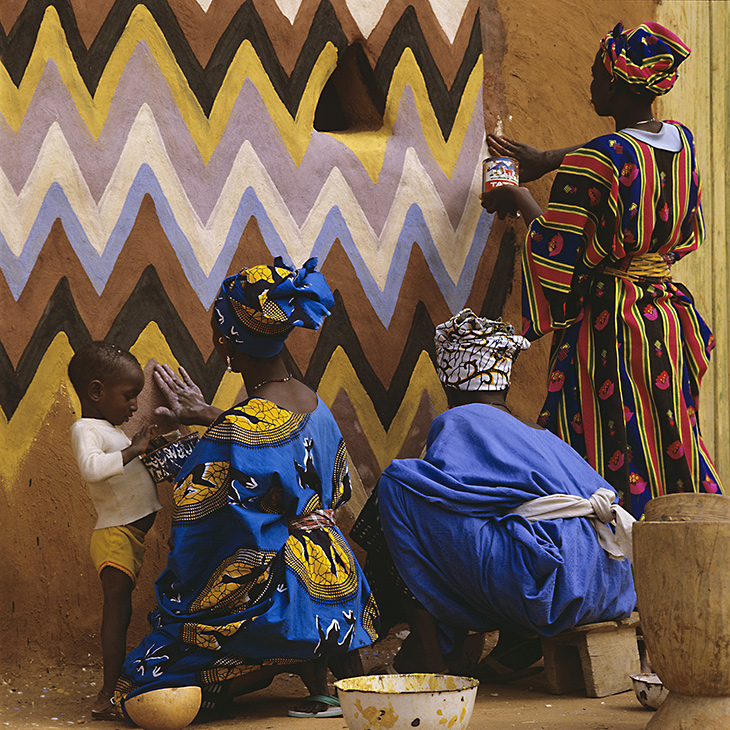
In the isolated desert settlements of southern Mauritania, Soninke women divide a wall surface into panels before painting purely abstract, geometric designs to create a vibrant rhythm along the flat surface. Buanch, Mauritania, 1988
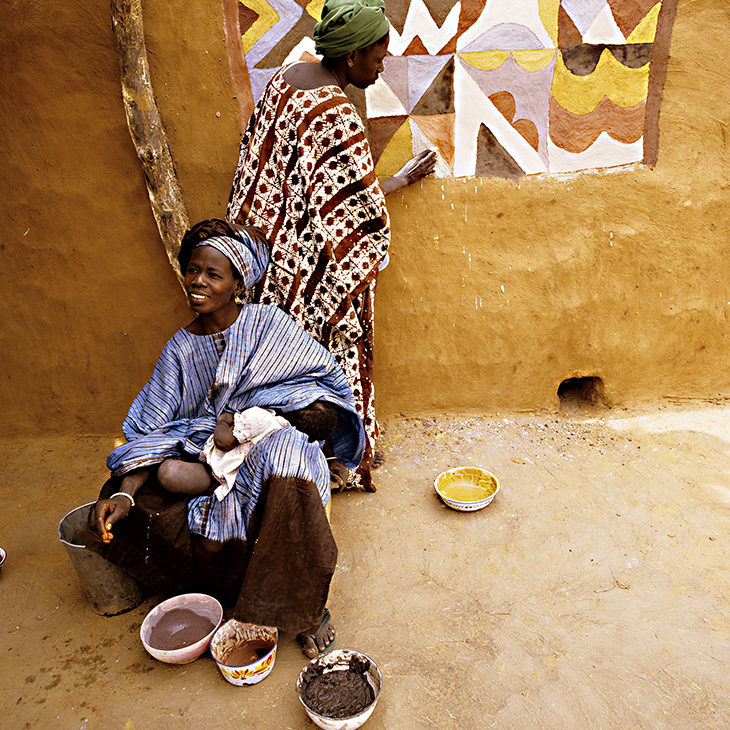
Silla Camara takes a break to nurse her child, while Fenda Gandega adds the final touches to their day’s work. Gandega compound, Djajibinni, Mauritania, 1988
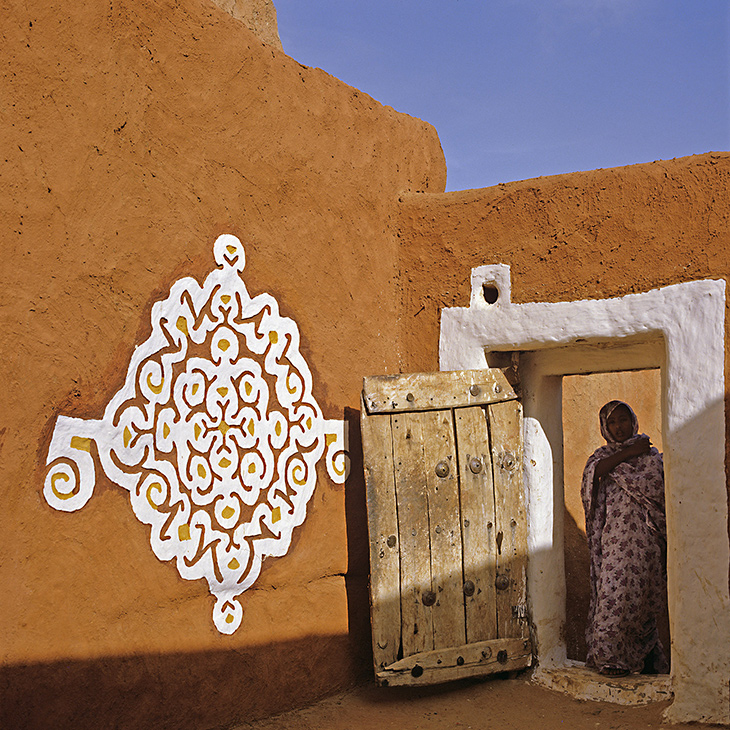
A wall decoration representing “mother with thighs”, a design derived from a woman’s thigh repeated in infinite combinations. Oualata, Mauritania, 1988
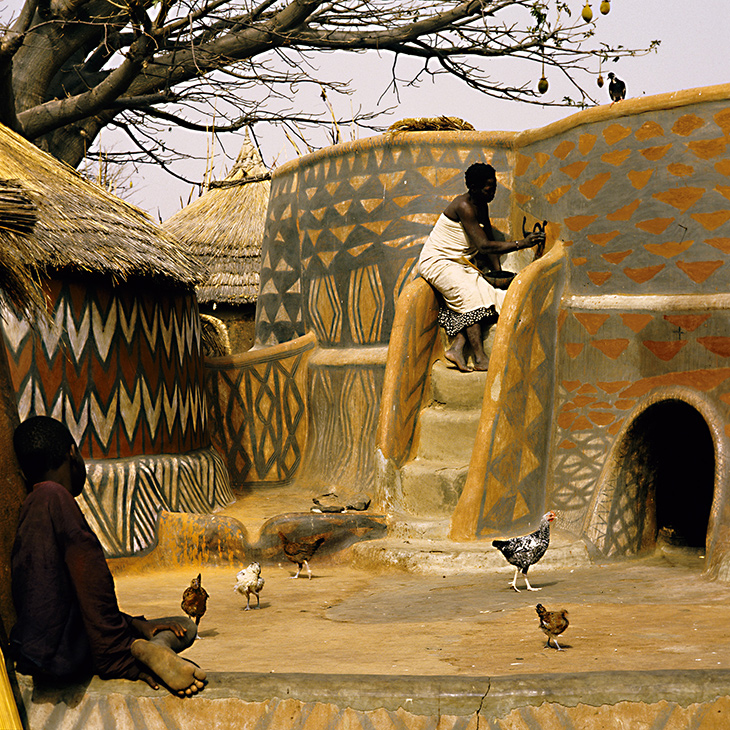
Although mural painting is very rare in Burkina Faso, this Nankani compound in the remote south is maintained with extraordinary vigor. Biloa Wenna paints a chicken, a remnant of pagan idolatry. Zecco, Burkina Faso, 1987
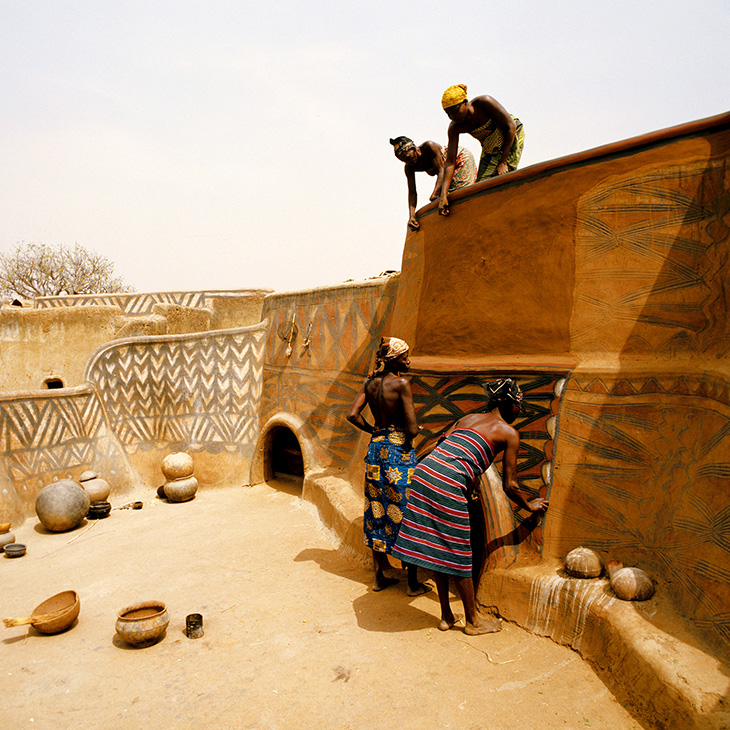
Nankani compounds are not only influenced by climatic or social factors, they are an integral part of the people’s day-to-day life, the core of their existence. Home of Chief Aneribe Zure of Sirigu, Ghana, 1987
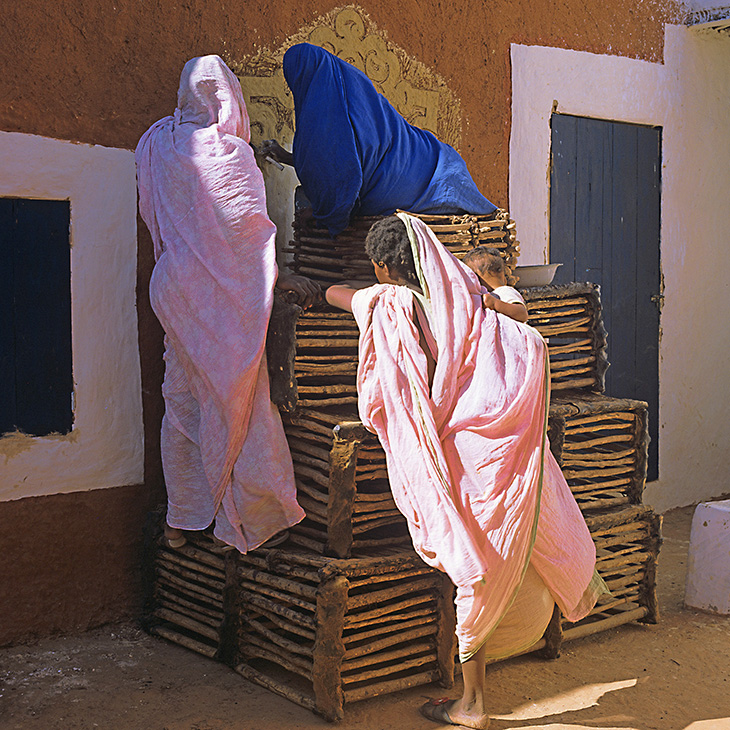
Young women learn from Neine Bou through observation as she skilfully decorates a wall. Oualata, Mauriitania, 1988
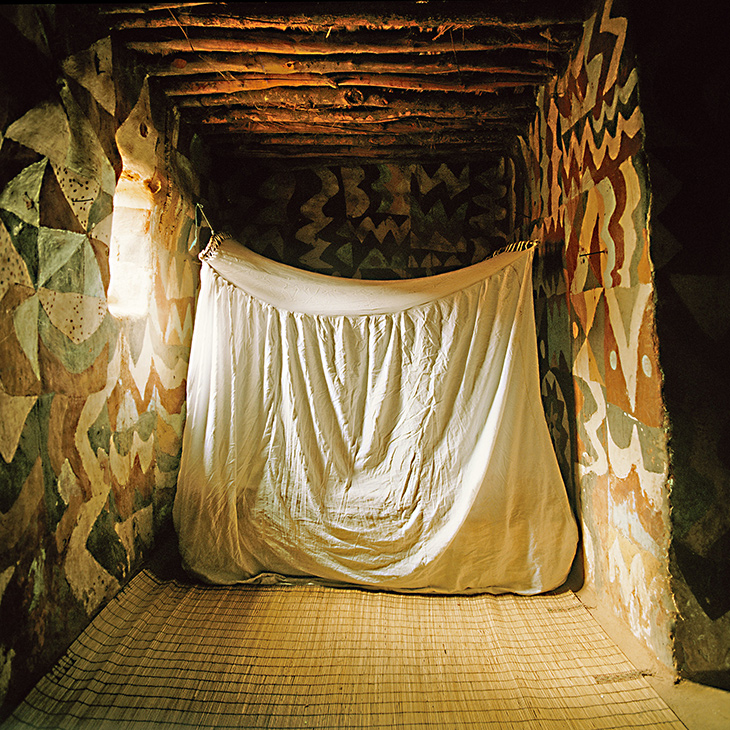
The elaborately painted interior walls of Soninke homes are intensified by the absence of furniture. At most a bed or mattress bear witness to a utilized space. Ouloumbini, Mauritania, 1988
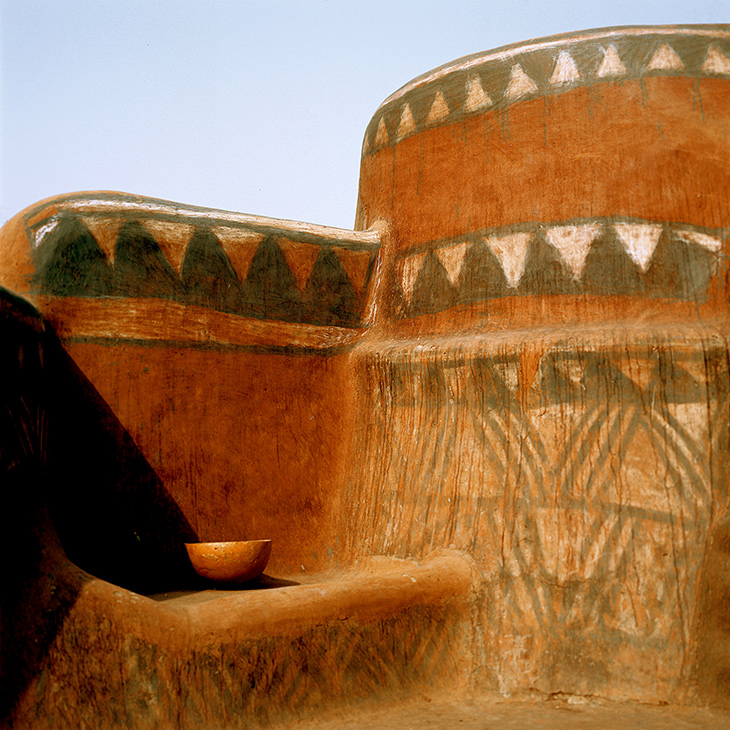
Wall detail from the Aneriba family compound is decorated with a triangular motif called wanzagsi, “broken calabash”. Sirigu, Ghana, 1986
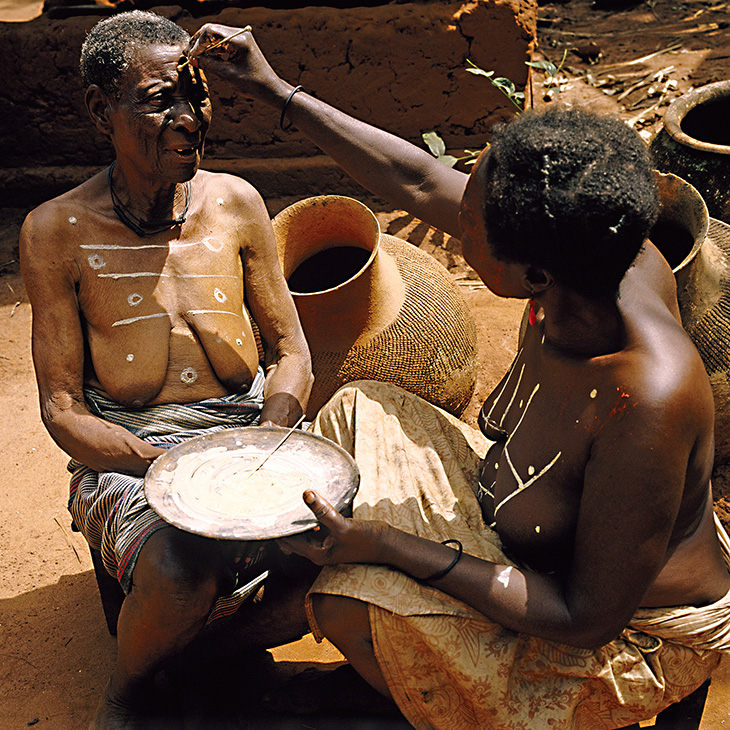
The Uli pattern is painted on the face of Ogbungwa, signifying she is considered a “good” person by other women in her community. Olido, Nigeria, 1988














